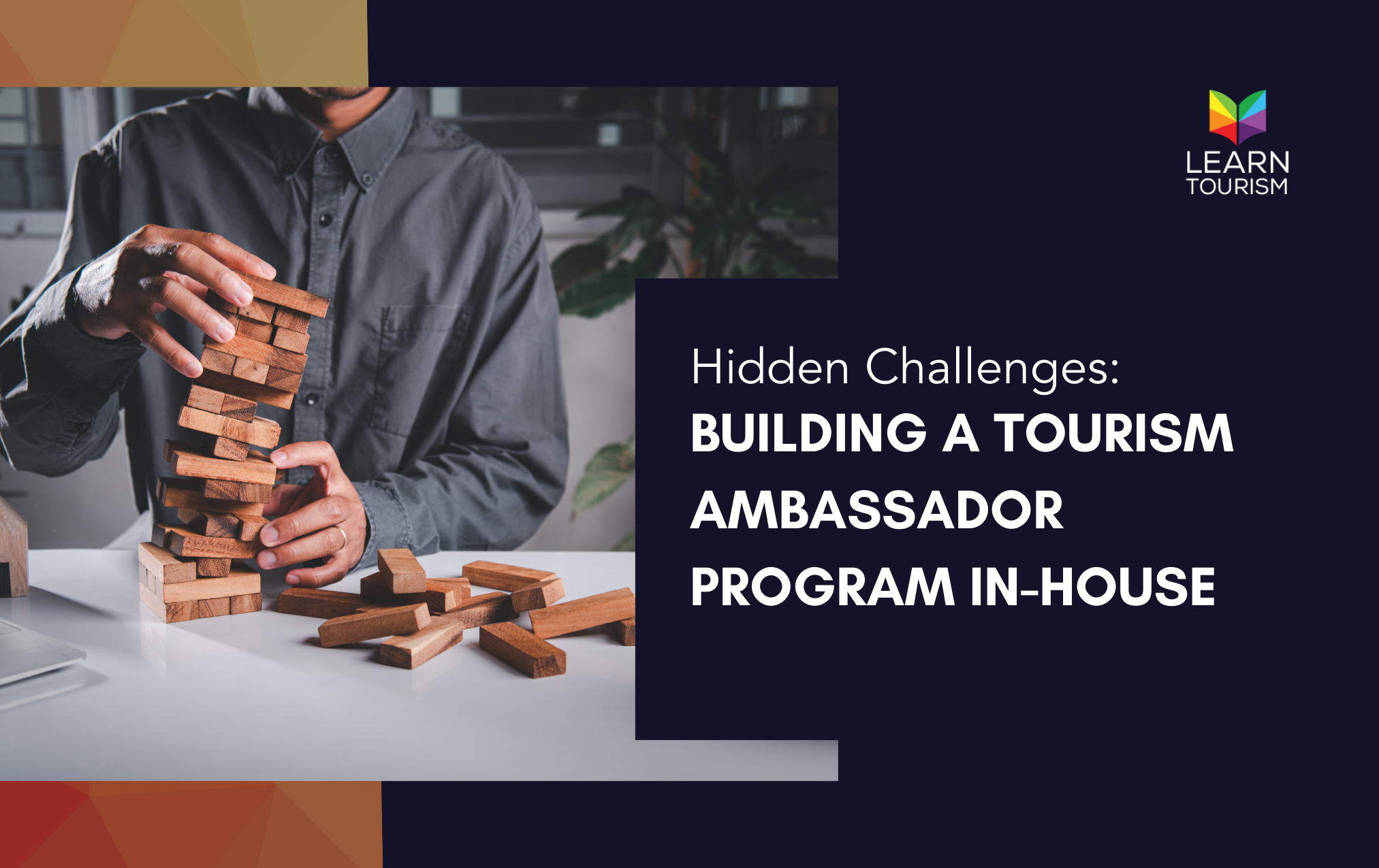
The Hidden Challenges of Building a Tourism Ambassador Program In-House
The Hidden Challenges of Building a Tourism Ambassador Program In-House
Developing a tourism ambassador training program can be an exciting initiative for any destination marketer. It fosters community pride, enhances the visitor experience, and strengthens local engagement. But for those determined to build an in-house program without outside support, the road ahead may be more complex than anticipated. While the DIY approach may seem like a cost-effective and customizable solution, many destination marketing organizations (DMOs) quickly discover the hidden challenges that come with it.
1. Underestimating the Scope of Content Development
Creating a training program requires more than just gathering facts about your destination. A truly effective program must integrate adult learning principles, engaging multimedia content, interactive assessments, and ongoing updates to remain relevant. Many DMOs underestimate the time and expertise needed to craft comprehensive training materials. Without an instructional design background, the end result may be a program that fails to engage learners or provide measurable impact.
2. Lack of Technological Infrastructure
Even the best content won’t be effective if it's difficult for users to access. A major challenge for in-house programs is finding the right technology to deliver training. DMOs often struggle with:
- Hosting a scalable Learning Management System (LMS)
- Tracking user progress and engagement
- Ensuring mobile accessibility for front-line workers
- Offering multilingual support for diverse audiences
Without an established platform, DMOs risk launching a program that is hard to manage and inconvenient for users.
3. Difficulty Maintaining & Updating Content
Tourism is dynamic—new attractions open, policies change, and visitor expectations evolve. A major pitfall of DIY programs is failing to account for the need for frequent updates. Without an easy way to edit and distribute new content, outdated information can reduce the credibility and usefulness of the training program.
4. Limited Engagement & Completion Rates
A tourism ambassador program only works if participants are actively engaged and complete the course. Many in-house programs suffer from low participation rates due to:
- Lack of incentives or certification
- Uninspiring course design
- Poor communication about the program’s value to potential learners
Programs developed by professional learning organizations, like Learn Tourism, use behavioral psychology to boost engagement and completion rates, ensuring real impact. In fact, those who work with Learn Tourism see 20% higher completion rates and nearly 5X more ambassadors than those who attempt to build programs in-house.
5. Overlooking the Power of Distribution
Even a well-designed training program is ineffective if it doesn’t reach the right people. DMOs managing their own programs often struggle with marketing their courses to the right audience, whether it’s front-line staff, local businesses, or community advocates.
Partnering with an established tourism training provider allows destinations to tap into a network of thousands of travel professionals already engaged in learning. Without this, DMOs must rely on local outreach efforts that may take years to gain traction.
6. Lack of Data & Performance Tracking
One of the biggest advantages of working with a tourism training expert is the ability to collect and analyze detailed performance data. Many DMOs that build their own programs lack robust analytics tools, making it difficult to:
- Identify who is taking the course
- Measure knowledge retention
- Assess the program’s impact on visitor satisfaction
Without these insights, it’s nearly impossible to prove the return on investment (ROI) of an in-house training initiative.
7. Missed Opportunities for Customization & Growth
Some destination marketers assume that working with an external partner means sacrificing customization, but this couldn’t be further from the truth. Learn Tourism, for example, offers fully branded content, real-time course updates, and integration with existing marketing initiatives. An in-house program, on the other hand, may start with a limited scope and struggle to expand as new needs emerge.
8. Missing Out on Partner Roundtables & Best Practices
One of the most overlooked benefits of partnering with Learn Tourism is access to exclusive partner roundtables and a collection of best practices for building, launching, distributing, and promoting programs. These collaborative sessions allow DMOs to learn from industry peers, adapt successful strategies, and continually improve their training programs. Without this knowledge-sharing network, many in-house programs struggle to evolve and maximize their impact.
The Smarter Solution: A Partnership with Learn Tourism
For DMOs considering a tourism ambassador training program, the good news is that you don’t have to do it alone. Learn Tourism specializes in creating engaging, scalable, and easy-to-manage training programs designed to increase community involvement and improve the visitor experience.
With:
- A fully integrated Learning Experience Platform
- Multilingual support
- Real-time tracking and analytics
- Customizable branded content
- Seamless distribution to thousands of travel professionals
- Access to partner roundtables and industry best practices
DMOs can launch a world-class training program without the common pitfalls of going solo. Instead of reinventing the wheel, leverage the expertise of an organization that has already built successful programs for destinations worldwide.
Want to explore what a professionally designed training program could look like for your destination? Contact Learn Tourism today to learn how we can help you create an effective, scalable, and impactful ambassador training program.
About Learn Tourism the nonprofit academy...
Learn Tourism is a 501c3 nonprofit organization dedicated to advancing the tourism industry through innovative educational practices and professional development initiatives. Our mission is to harness the power of science, business psychology, and adult education to build sustainable economies and enrich the tourism landscape.